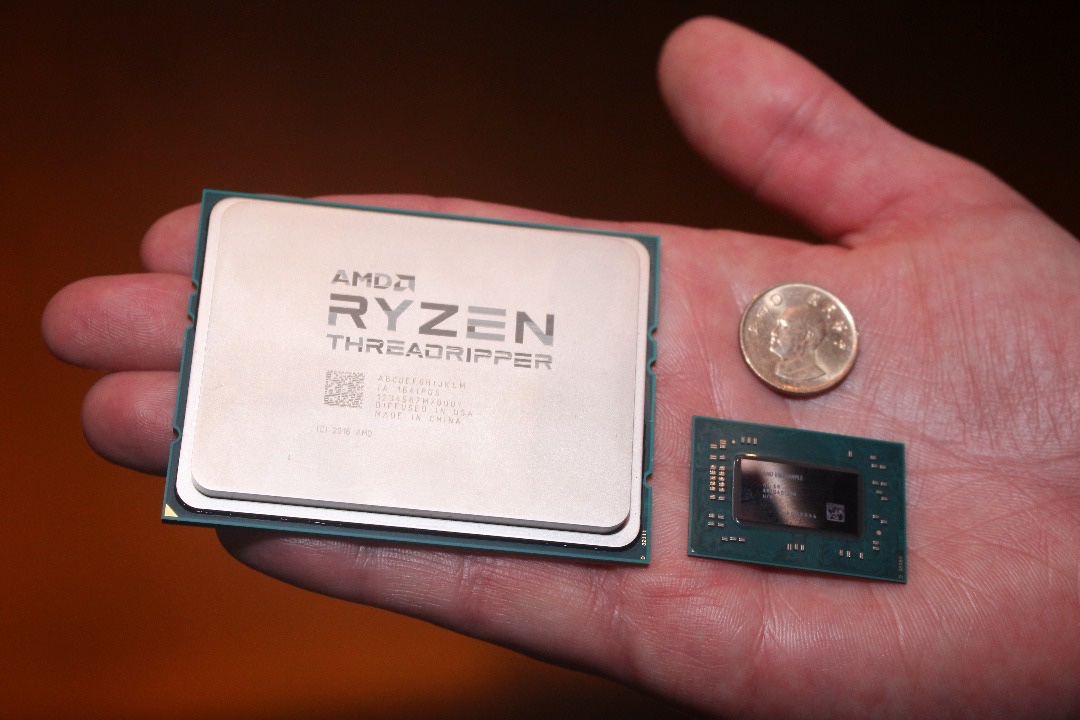It's not a few months, Zen for desktop and server was known to be coming in this time frame for the past two + years, Intel will absolutely have known about it for the last 2-3 years. These chips have been sampling for over 12 months with some information going to partners before that time so they could plan and optimise software for testing of samples. information gets out, there is even little chance Intel didn't have their hands on a few chips through big partners who had themselves some EPYC samples and shared them.
The problem here is Intel is making a massive chip, it's at the edge of feasible production size, they can't have 128pci-e, because they can't physically make a bigger die while having remotely useful volume. AMD have been building towards a interposer/mcm style interconnect for the past 10 years. They made their first interposer test chip in 2011 with I believe the first test HBM chips.
The sole reason AMD has more pci-e, more bandwidth/memory channels, higher memory capacity and more cores is the multichip design. This wasn't just a gambit, all the work AMD has done in the past decade has been building towards this. Regardless of Bulldozer, their intention was to make a chip akin to Zen, something with a fabric that allows more small dies to work together when the technology became feasible. Intel is seemingly years out from such a design and they've had years of warning that AMD would be able to do this, AMD hasn't been quiet or secretive about their work on a fabric, interposers or their intention for GPUs to go more smaller cores rather than one large die and much of the industry is on the same page(though several years behind on the implementation) as it's seen as the way forward with process node shrinks being harder and further between.
If we say AMD had a 6 core design with 1 memory channel and 20pci-e and it was 150mm^2 and this more closely lined up with intel in terms of a 24 core, 4 memory channel ~80 pci-e lane chip. Lets say Intel's chip is 550mm^2. AMD can easily add the extra memory channel, the extra 2 cores and the extra 12 pci-e per chip because it only becomes a 195mm^2 chip, but for Intel to add the same amount, roughly 180mm^2 in die space their chip becomes 750mm^2. 195mm^2 still increases cost of manufacture for AMD by what, near enough 30%, but yields at 195 vs 155 will be near enough the same while yields of 550 vs 750 are going to change significantly. There is also simply the maximum reticle size of the process, I'm not sure Intel actually list theirs anywhere but Glofo's 14nm is 600mm^2 while Glofo's 7nm will be 700mm^2. Intel is going to be literally butting up against both maximum die size that makes sense due to yields and the maximum they can actually achieve.
This is also with AMD on a less dense process, with Zen 2 vs whatever Intel have next AMD will have a seemingly on par or even better process. Many dies vs one die is winning for AMD with a fairly hefty process disadvantage, when the processes are on par if anything the gap between Zen 2 and the successor to Skylake-SP could be even bigger. If AMD are winning enough business to be financially viable, the extra die space available with 7nm could make AMD add a vastly more lanes to their interconnect link to start going after 4 and 8 way systems, though the volume of them and the requirement of an extra die to tape out might make it not all that worthwhile, those extra links would be a complete waste of die space on every other platform. But that is the good thing about infinity fabric, it's completely scaleable as it was designed to just put in as much as you want or need.
Intel knew what was coming, they simply don't have the ability to make bigger chips than they are right now and they don't have a strategy for making multiple dies work together as seamlessly as AMD. At this point I'd be very surprised if Intel can come up with something matching AMD on i/o, bandwidth and core count till at least Zen 3 time frame and a couple of years from now.


